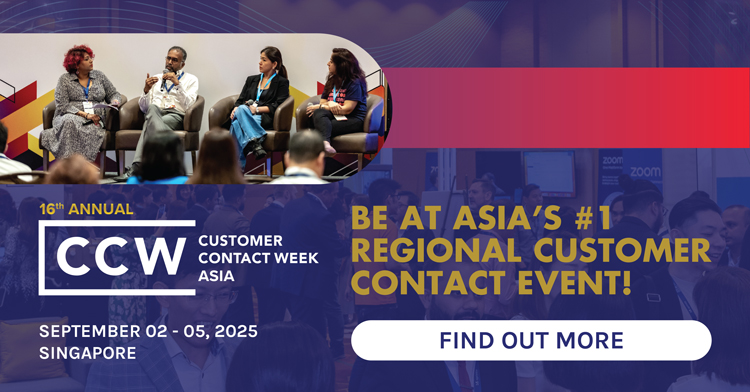Intelligent experiences, powered by AI, are no longer a theoretical concept. They’re a tangible reality that’s transforming how businesses operate and how they connect with customers and employees. I recently spoke with Fabrice Martin about the trends reshaping customer engagement through AI and how Medallia’s roadmap is evolving to meet this trend.
Mark Atterby (MA): What trends do you see in the evolution of CX and AI, and how does Medallia’s roadmap aim to address these trends?
This evolution is absolutely central to Medallia’s roadmap because we aspire to be the “nervous system of experience” for organisations. That means we want to tap into every single signal related to customer, employee, or citizen experience, apply the fastest and most sophisticated AI-powered analysis to understand those signals, and then drive immediate action whether through Medallia itself, external systems, or human agents. We’re building toward becoming a reflexive system of experience—much like how your hand automatically moves to catch or avoid a ball without conscious thought—where many customer experience processes become invisible and automated while maintaining the quality and empathy that great experiences require.

MA: How does Medallia’s roadmap and strategy compare to other players in the market?
FM: Our unique difference lies in being the only experience vendor that operates at truly massive scale with frontline users—we’re talking about customers with 20,000 to 70,000 users logging into Medallia daily. These aren’t analysts or executives; they’re store managers, hotel managers, restaurant managers, dealership staff, and contact center operators who use our platform every day to make their jobs better. We enable millions of frontline employees across the world to improve experiences based on information from Medallia, and no other company operates at this scale of frontline integration.
The power of combining generative AI with this deep frontline connection is that we can deliver cutting-edge technology with the predictability, scalability, consistency, and security that large organisations require. Companies aren’t going to roll out ChatGPT to 20,000 users because those employees aren’t technical, they’re not prompt engineers, and they can’t reliably identify when AI might be hallucinating or providing unreliable responses. The risk is simply too high for enterprise deployment at scale.

What we’ve developed is specifically Frontline-Ready AI™—AI that’s been designed from the ground up to be predictable, reliable, consistent, secure, and scalable so that our customers can deploy these capabilities to their entire workforce with confidence. We already have over 50 customers who have rolled out various AI functionalities, and they’re seeing immediate results. One major retailer discovered through our AI-powered themes detection that customers were frustrated with what they perceived as an unfair surcharge on pet food shipments, and they were able to identify and fix this issue within 24 hours of deployment. Another customer reduced the time their frontline managers spend crafting customer response messages from three minutes to 30 seconds using our Smart Response feature, saving multiple person-years of effort annually while actually improving the personalisation and empathy of their communications.
MA: Can you share examples of how Agentic AI can autonomously solve a customer issue or improve an employee’s workflow without human intervention?
FM: While agentic AI represents an exciting frontier, I want to be clear about where we currently stand versus where we’re heading. All of our AI functionality today operates with humans in the loop—we’re not yet at the stage where we’re comfortable letting machines run fully automated closed-loop processes, especially given that we believe every customer interaction is high-stakes when you’re truly committed to excellent customer experience.
However, we’re building toward that capability through our current human-in-the-loop implementations. Every time customers use our Smart Response feature, themes detection, or Root Cause Assist, we’re learning from those interactions and improving our models’ quality and predictability. This continuous learning is essential for eventually enabling full automation, but we’re taking a deliberately conservative approach because the stakes are so high in customer interactions.
Looking ahead, we envision agentic AI solutions that could automatically identify a customer experiencing repeated issues with a particular product or service, cross-reference that with similar patterns across the customer base, and autonomously initiate appropriate remediation—whether that’s issuing a credit, scheduling a service appointment, or escalating to a specialist—all while ensuring the customer feels heard and valued. For employee workflows, agentic AI could detect when a frontline worker is struggling with a particular type of customer interaction and automatically surface relevant training resources, successful resolution strategies from similar situations, or even temporarily route similar cases to more experienced team members until the employee’s confidence builds.
The key is that when we do implement fully autonomous agentic AI, it will be built on the foundation of extensive human-in-the-loop learning and will maintain the same standards of reliability and empathy that characterise our current AI offerings. We expect this transition to happen over the next couple of years as our models reach the necessary levels of predictability and trust.
MA: How do you balance the desire for instant, automated personalisation with the need for a human-in-the-loop, especially in high-stakes customer interactions?
FM: Our philosophy is straightforward: if you truly believe in delivering excellent customer experience, then every interaction with a customer is high-stakes, which means you need to ensure you’re doing the best possible job every time. That’s why all of our current AI functionality maintains humans in the loop rather than moving to full automation. We’re empowering humans to react better and work faster, but we’re not yet ready to remove human judgment from the equation entirely.
This approach allows us to capture the efficiency and consistency benefits of AI while maintaining the empathy, context awareness, and complex problem-solving capabilities that humans bring to customer interactions. Our Smart Response feature is a perfect example—it can draft personalised, empathetic responses in seconds rather than the three minutes it typically took managers to craft responses manually, but a human still reviews and approves each message before it goes to the customer. This gives us the speed and personalisation benefits of AI with the quality assurance and contextual judgment that humans provide.
The learning that happens through these human-in-the-loop interactions is crucial for our long-term strategy. Every time a human modifies, approves, or rejects an AI-generated response or recommendation, we’re training our models to better understand what constitutes appropriate, effective customer communication in different contexts. This continuous improvement process is building the reliability and predictability we’ll need to eventually enable more automated processes while maintaining the high standards that excellent customer experience requires.
We’re confident that within the next couple of years, this learning will enable us to selectively automate certain types of routine interactions while always maintaining the option for human intervention when situations become complex or sensitive. The goal isn’t to replace human judgment but to augment it and free up human agents to focus on the most challenging and meaningful customer interactions where their skills add the most value.
MA: What is Medallia doing to prepare its customer for the future?
What we’re doing at Medallia to prepare our clients for this future is ensuring that we not only talk the talk but walk the walk when it comes to the listen-learn-act framework. We listen to our customers’ feedback, learn from their experiences with our platform, and act by adding innovation in the places where they need it most—particularly at the frontlines where experiences actually happen. This means our CCO clients become rock stars within their own organizations because they’re driving measurable improvements in customer satisfaction, employee engagement, and business performance using our AI-powered tools.

